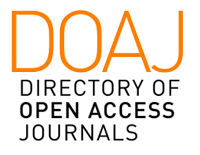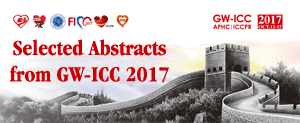[GW28-e0596]
Melatonin sustained-released cardiac patch improves functional survival of transplanted bone marrow mesenchymal stem cells after myocardial infarction in rats
Jiangwei Chen1 Dong Han1 Hongbing Deng2 Feng Cao3 1
1.Department of Cardiology, Xijing Hospital, Fourth Military Medical University, Xi’an 710032, China
2.School of Resource and Environmental Science, Wuhan University, Wuhan 430079, China
3.Department of Cardiology, Chinese PLA General Hospital, Beijing 100039, China
Objectives: In the present study,we aimed to fabricate a type of novel melatonin sustained-released nanofibrous cardiac patch and explore its effect on functional survival of transplanted stem cells for heart repair aftermyocardial infarction (MI). Meanwhile, this study explored a novel noninvasive molecular imaging strategy to trace the stem cell differentiation.
Methods: Melatonin sustained-released cardiac patch was fabricated via electrospinning and layer-by-layer coating technique. Bone marrow mesenchymal stem cells (BMSCs) with Fluc/eGFP/cardiac troponin T (cTNT)promoter-driven ferritin heavy polypeptide (FTH)triple reporter genes were seed cells and engrafted to the patch. 5-Aza was used to induce BMSCs to differentiate into cardiomyocytes, and the relevance between expressions of cTNT and FTH was analyzed by Western Blot. Linear relationship between magnetic resonance imaging (MRI) signal and differentiation degree (cTNT expression level) of transplanted BMSCs was assessed in vitro. Wild type Sprague Dawley rats (male, 140-160g) were randomized into four groups (each n=10): Sham group, MI group (MI model was established by ligation of left anterior descending coronary artery), MI+patch/BMSCs group and MI+patch/melatonin/BMSCs group (Patches with or without sustained-released melatonin were adhered onto the epicardium over the infarcted region respectively, patch size:10×10 mm2, BMSCs count: 2×105). Myocardial apoptosis in the peri-infarct area was determined by TUNEL staining 24 hours post-operation. Viability of engrafted BMSCs was tracked using bioluminescence imaging (BLI) via built-in firefly luciferase (Fluc) in vivo 1, 3, 7, 14, 21 and 28 days post-operation. Cardiacfunction was monitored by transthoracic echocardiography (TTE). MRI was performed to detect cardiac structure and BMSCs differentiation in vivo. Histopathological stainings (Masson’s Trichrome, prussian blue, cTNT/GFP, CD68 and CD31 immunofluorescence) were performed to evaluate myocardium fibrosis, Fe distribution, BMSCs viability and differentiation, neovascularization and inflammatoryreaction 4 weeks after operation.
Results: Melatonin sustained-released cardiac patch wasfabricated and steadily released melatonin. MRIsignalshowed a linear correlation with FTH expression level in vitro. TUNEL staining showed reduced apoptotic index in MI+patch/melatonin/BMSCs group. BMSCs were detectable until 4 weeks after transplantation, and the Fluc signals of MI+patch/melatonin/BMSCs group decreased more lenitively than MI+ patch/BMSCs group. TTE showed increased cardiac functionin in MI+melatonin/patch/BMSCs group (EF value: sham: 76.3±4.7%, MI: 32.1±5.2%, MI+patch/BMSCs: 46.5±7.1%, MI+melatonin/patch/BMSCs: 57.8±6.3%, 4 weeks post-operation). MRI showed thickened leftventricles and remarkable lowT2 signals of rats bearing melatonin/patch/BMSCs treatment in vivo. Histopathological stainings indicated patch/melatonin/BMSCs treatment decreased myocardialapoptosis and cardiac fibrosis, increased BMSCs viability and differentiation, promoted neovascularization, and caused minor immunological response.
Conclusions: Melatonin sustained-released cardiac patch improved viability and differentiation of implanted BMSCs, restrained ventricular remodeling, and prevented heart failure. In comparison to infarcted hearts with no treatment and patch/BMSCs therapy, hearts bearing patch/melatonin/BMSCs therapy showed significant anatomical and functional improvement.














